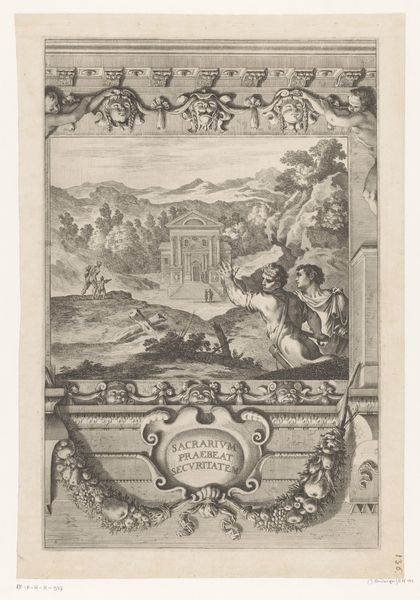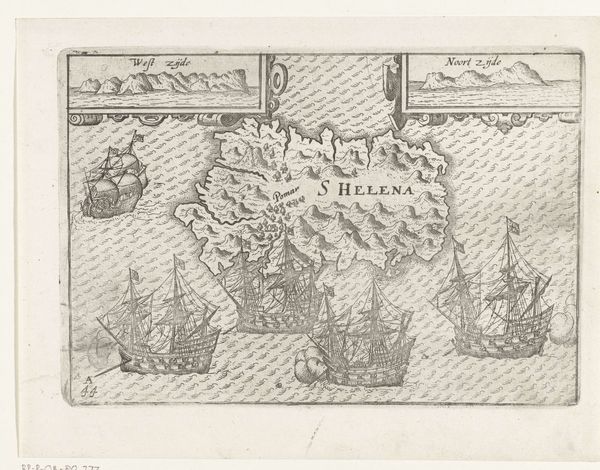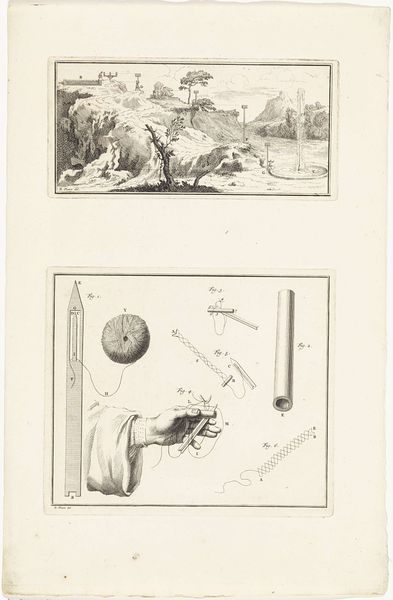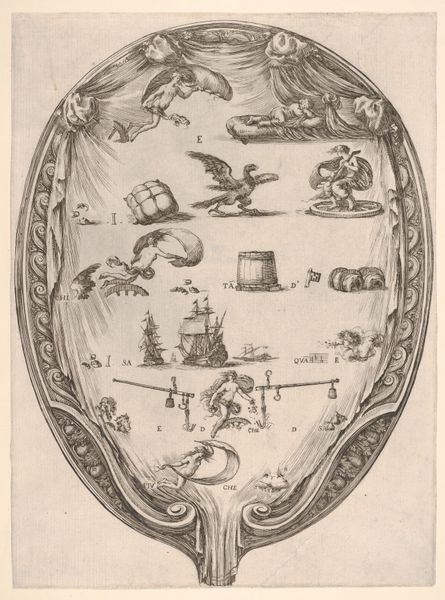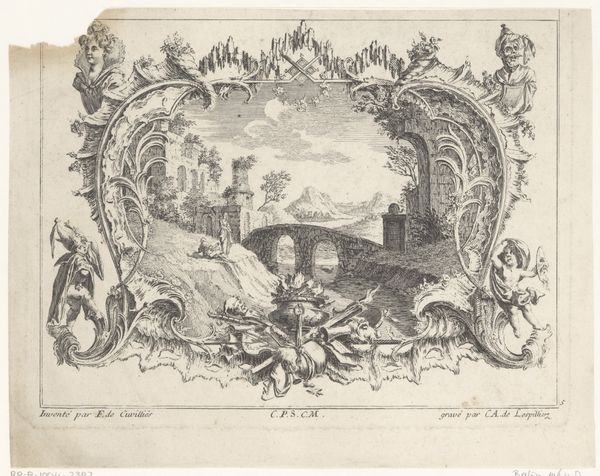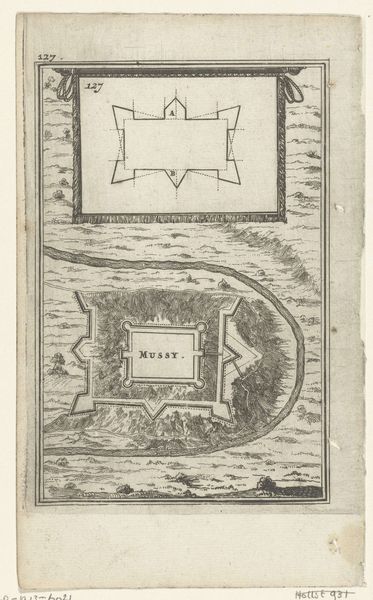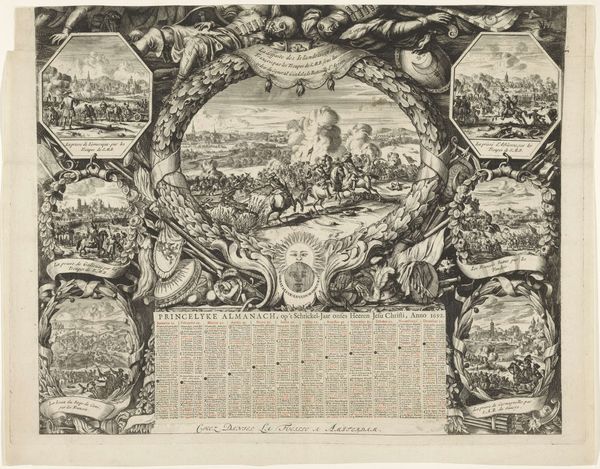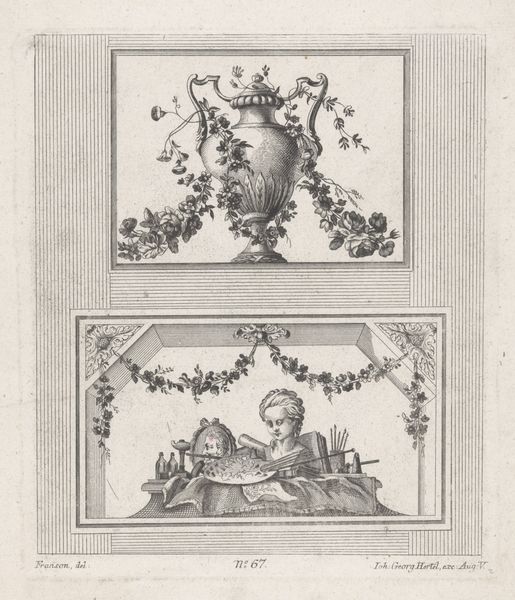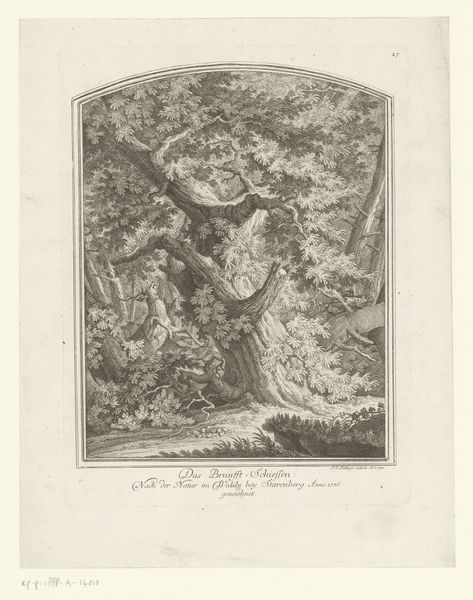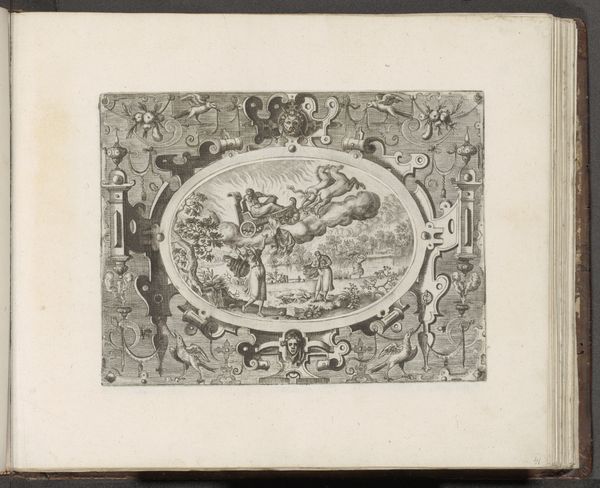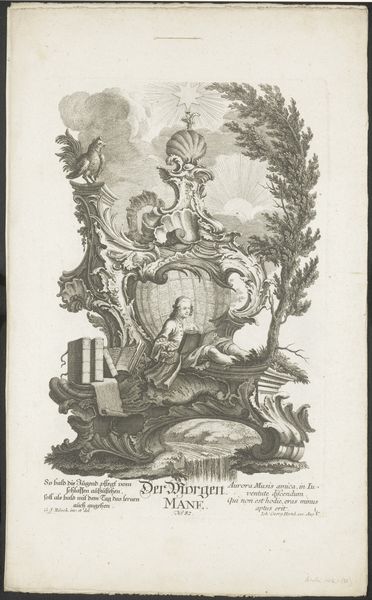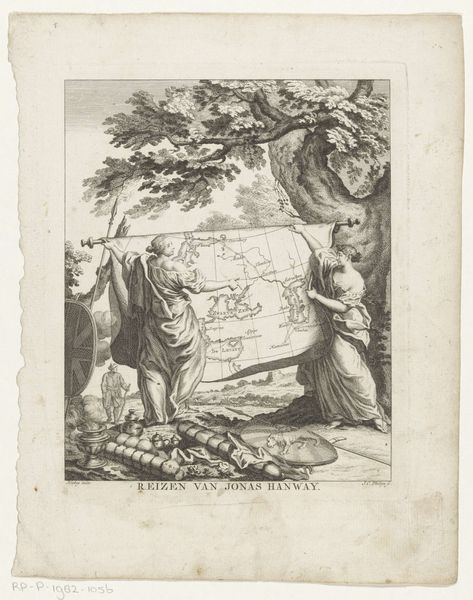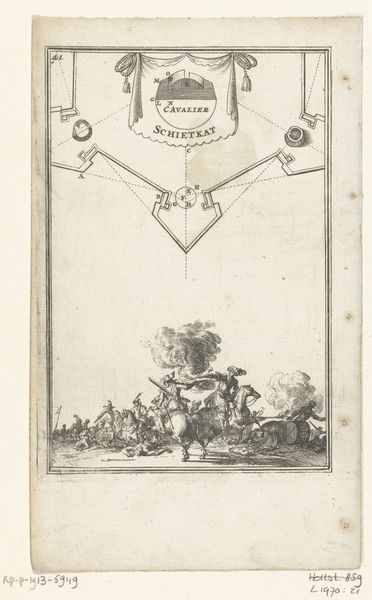
Two Maps of Ancient Rome with a River God and Romulus and Remus 1690 - 1704
0:00
0:00
drawing, print, ink, engraving
#
drawing
#
baroque
# print
#
landscape
#
figuration
#
ink
#
history-painting
#
engraving
Dimensions: 12 3/4 x 7 13/16 in. (32.4 x 19.8 cm)
Copyright: Public Domain
Editor: This drawing by Jan Goeree, "Two Maps of Ancient Rome with a River God and Romulus and Remus", was made between 1690 and 1704, using ink and engraving. It's fascinating how he combines cartography with classical mythology, but the way the maps are framed within the larger composition feels quite deliberate. How do you interpret this work, considering the historical context? Curator: Well, the drawing exists in a very specific time and place—the late 17th century. Goeree, a Dutch artist, is looking back at Rome during a period of intense cultural interest in classical antiquity. This interest was, in part, politically charged. Think about the rising nation-states in Europe; each looked to Rome as a model, trying to connect their power to that of the Roman empire. So, what does this drawing tell us about that impulse? Editor: It almost feels like Goeree is using the maps not just for accuracy, but as props in a theatrical display. The river god and Romulus and Remus add a layer of... propaganda, maybe? Curator: Precisely. Consider where such a drawing might have been displayed or reproduced. It was likely intended for a wealthy collector's cabinet of curiosities, or as an illustration in a scholarly book on Roman history. Therefore, the image served not only as a visual record, but also as a status symbol—evidence of the patron’s classical learning and sophisticated taste. Can we see how the formal aspects enhance the prestige? Editor: Absolutely! The careful detail, the inclusion of allegorical figures... it elevates the map from a purely functional document to a work of art, associating the owner with the grandeur of Rome. Curator: And what do you now notice when we consider this as not only an aesthetic experience but a political one as well? Editor: I now have a new understanding that an art is also charged and designed to reflect, but also to drive the cultural environment in that space. Thank you for sharing! Curator: And thank you, together, we've exposed how art both reflected and actively participated in crafting perceptions of power and history.
Comments
No comments
Be the first to comment and join the conversation on the ultimate creative platform.
